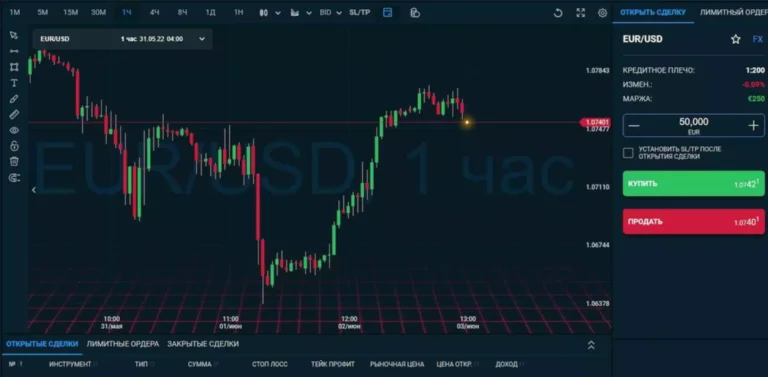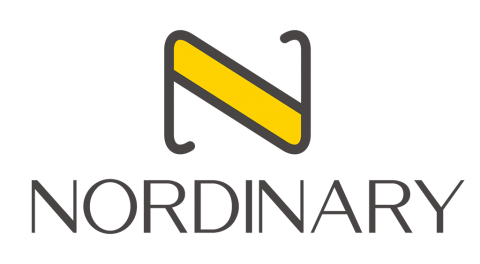Content
By linking up separate blockchains, this bridge makes https://www.xcritical.com/ it easy for assets to be exchanged smoothly. When moving assets from one blockchain to another, the process involves locking up the original asset on the first chain and then creating a similar one on the new chain where you want it to go. This way, whatever value your asset had stays intact during its journey across chains.
Choosing Тhe Best Custody Solution for Your Blockchain Startup
In this case, the organization of trade between the broker and the client has greatly facilitated thanks to the software, similar to the popular MetaTrader 4. Aave, a leading DeFi protocol, uses a bridge to connect its Ethereum-based platform with the Avalanche network. Imagine a trader seeking to arbitrage price differences between two Cryptocurrency wallet exchanges. However, with a well-designed bridge, the trader can swiftly move assets from one exchange to another, capitalizing on market inefficiencies.

Understanding the Role of Liquidity Bridges
Connect a main What is a Liquidity Bridge blockchain with a sidechain, allowing for scalable and efficient transactions while maintaining security tethered to the main chain. In this guide you’ll learn everything you need to know about multi-chain blockchain bridges, and how they work. Imagine standing at the edge of a vast canyon, your destination visible but unreachable due to the expanse separating you from it. In blockchains, these canyons represent the lack of interoperability between different blockchain networks.
Forex & Crypto-Themed Website Domains for Sale
In practice, a cross-chain bridge is a particular use case for a cross-chain messaging protocol, with most bridges merely providing application-specific services between two blockchains. In other instances, they are used to facilitate a broader range of applications, such as cross-chain decentralized exchanges (DEXs), cross-chain money markets, and more generalized cross-chain functionality. It operates through a decentralized autonomous organization (DAO) comprising several DeFi projects without a single central authority overseeing the process. By allowing digital assets and information to traverse from one blockchain to another, bridges extend the utility and accessibility of decentralized applications (dApps) and assets beyond the confines of a single network. Furthermore, cross-chain bridges will drive the adoption of decentralized finance (DeFi). This will enable more users to access DeFi platforms, regardless of their native blockchain.
Written by Autobahn Network Editor
Cross-chain bridges are a vital component of the cryptocurrency ecosystem. In summary, they connect different blockchains, allowing them to work together. However, they also pose challenges and risks, particularly in terms of security and regulation. As the technology matures, we can expect more sophisticated and versatile bridges. These bridges will unlock new possibilities and drive the growth of the decentralized web.
Essentially, the bridge changes the venue for the asset—hold it on Chain A, move it to Chain B to access another service or liquidity pool, and then move it back. To mitigate these risks, rigorous audits and continuous security updates are essential for both centralized and decentralized bridges. External audits by third-party security firms can identify and address weaknesses in smart contract code, helping to prevent exploitation.
Straight-through processing technology allows traders to receive up-to-date quotes and liquidity without the need for multiple intermediary stages of transferring information. In summary, liquidity bridges are the invisible threads weaving together the fabric of the financial ecosystem. Their role extends beyond mere connectivity; they empower traders, enhance DeFi platforms, and foster cross-chain collaboration. As the crypto landscape evolves, expect liquidity bridges to play an increasingly pivotal role in shaping the future of finance.
- This decision is crucial as it directly impacts the efficiency and effectiveness of connecting traders to global markets.
- This streamlines the trading process and allows traders to seize opportunities across different markets more efficiently.
- Developers can create multi-chain projects, leveraging the strengths of different blockchains.
- Programmable token bridges enable more complex cross-chain functionality upon the completion of the bridge function.
- They are already transforming the way we interact with and utilize blockchain technology, and their potential impact is only beginning to be realized.
- If your liquidity bridge can’t provide diverse channels, you might face the risks of market manipulation and uneven spread margins.
As a result, your brokerage will meet even the strictest client expectations related to tight spread margins, optimal prices and fast execution. The issuer integrates with a liquidity bridge that connects its stablecoin to a reserve of USD. When demand increases, the bridge mints new stablecoins against the reserve. Conversely, when stablecoins are redeemed, the bridge burns them and releases USD. A multinational bank with branches in various countries faces challenges in managing liquidity across borders.
To realize the maximum potential of a multi-chain ecosystem, blockchain interoperability is therefore essential. Cross-chain messaging protocols, which enable smart contracts to receive and write data to and from other blockchains, are the backbone of blockchain interoperability. However, blockchains are not natively capable of communicating with each other. This makes blockchain interoperability vital in order to realize the full potential of a multi-chain ecosystem.
Token bridges often leverage a cross-chain messaging protocol for a specific purpose—to move tokens between blockchains. In effect, a cross-chain bridge is a very narrow use case for a cross-chain messaging protocol, with many bridges serving simply as application-specific services between two blockchains. In other cases, cross-chain bridges are used to facilitate wider utility, such as cross-chain decentralized exchanges (DEXs), cross-chain money markets, or more provide more generalized cross-chain functionality. With the development of the DeFi industry, both centralized and decentralized exchanges (CEXs & DEXs) have an all time high demand for liquidity. A wave of multi-chain token launches triggered the need for bridging liquidity, hence the importance of the cross-chain bridge.
Security risks – bridges rely on smart contracts so that means they rely on their security; if the smart contract has bugs or flaws, it can compromise the bridge mechanism; 2. Scalability – many blockchain bridges can handle only a limited number of transactions, which can lead to bottlenecks; 3. Liquidity issues – when assets are transferred across different chains, liquidity can become fragmented, affecting trading and price stability; 4.
For this reason, Across is only deployed on chains that have an official bridge that helps carry out its canonical token transfers under the hood. Blockchains exist as separate distributed networks with different tokens. As a result, the native asset of each chain is technically not transferable to another. For instance, users cannot move their assets from Avalanche to Solana because they are two different ecosystems. Finally, bridges offer a variety of tools that can help to complement a broker’s risk management.
Moreover, supporting and funding innovative research initiatives focused on novel trustless protocols and cryptographic mechanisms can pave the way for a more secure future of interoperability. The realm of blockchain bridges pulsates with diverse protocols, each with its unique strengths and characteristics. Understanding these distinctions empowers you to select the optimal bridge for your specific needs. Liquidity providers receive a portion of bridging fees and earn a share of ChainPort’s success. For some pools, the LP token can be staked, earning the liquidity provider an even higher APR.

On the other hand, the fees could have been incurred once and for all in a single bridge. Even at that, the transaction fees of most bridges are ridiculously low compared to what exchanges would have charged. The centralized authority controlling the bridge can unanimously steal users’ funds. Even though no founding team of any trusted bridge has rugged the users, it is possible.
